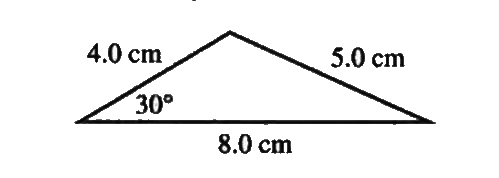If 0.16 kJ is the NSP in tertiary carnivores what is the NPP in that ecosystem (Note: 0.01% of NPP is transfered to the tertiary carnivores
80 J
400 J
1600 KJ
8000 KJ
The correct Answer is:C
To find the Net Primary Productivity (NPP) in the ecosystem given that the Net Secondary Productivity (NSP) in tertiary carnivores is 0.16 kJ and that only 0.01% of NPP is transferred to the tertiary carnivores, we can follow these steps:
1. Understand the relationship between NSP and NPP:
- NSP is the energy available to the tertiary carnivores after accounting for energy lost at lower trophic levels.
- We know that only 0.01% of the NPP is transferred to the tertiary carnivores.
2. Set up the equation:
- If NSP = 0.16 kJ and this represents 0.01% of NPP, we can express this relationship mathematically:
NSP=0.01100×NPP
- Rearranging this gives us:
NPP=NSP×1000.01
3. Substitute the given NSP value:
- Now substitute NSP = 0.16 kJ into the equation:
NPP=0.16×1000.01
4. Calculate NPP:
- Perform the calculation:
NPP=16.00.01=1600 kJ
5. Conclusion:
- Therefore, the NPP in that ecosystem is 1600 kJ.
Final Answer:
The NPP in that ecosystem is 1600 kJ.
---
- NSP is the energy available to the tertiary carnivores after accounting for energy lost at lower trophic levels.
- We know that only 0.01% of the NPP is transferred to the tertiary carnivores.
- If NSP = 0.16 kJ and this represents 0.01% of NPP, we can express this relationship mathematically:
NSP=0.01100×NPP
- Rearranging this gives us:
NPP=NSP×1000.01
- Now substitute NSP = 0.16 kJ into the equation:
NPP=0.16×1000.01
- Perform the calculation:
NPP=16.00.01=1600 kJ
- Therefore, the NPP in that ecosystem is 1600 kJ.
The NPP in that ecosystem is 1600 kJ.
Topper's Solved these Questions
- BOOK - AAKASH SERIESCHAPTER - ECOSYSTEMEXERCISE - EXERCISE-I (TROPHIC LEVELS AND FOOD CHAINS )21videos
ECOSYSTEM
- BOOK - AAKASH SERIESCHAPTER - ECOSYSTEMEXERCISE - EXERCISE-I (ECOLOGICAL PYRAMIDS )15videos
ECOSYSTEM
- BOOK - AAKASH SERIESCHAPTER - ECOSYSTEMEXERCISE - EXERCISE-I (DECOMPOSITION)1videos
ECOSYSTEM
- BOOK - AAKASH SERIESCHAPTER - CELL CYCLE AND CELL DIVISIONEXERCISE - Exercise-III18videos
CELL CYCLE AND CELL DIVISION
- BOOK - AAKASH SERIESCHAPTER - ENVIRONMENTAL ISSUESEXERCISE - Exercise-III (Previous AIPMT/NEET Questions)41videos
ENVIRONMENTAL ISSUES
Similar Questions
The NPP in a plant is 100kj. What is the body mass of the secondary carnivore?
View SolutionTwo small iron particles, each of mass 280 mg, are. placed at a distance 10 cm apart. If 0.01% of the electron. of one particle are transferred to the other, find the. electric force between them. Atomic weifht of iron is 56gmol− and there are 26 electrons in each atom of iron.
View Solution
Knowledge Check
- Question 1 - Select One
The lengths of the triangle shown below are rounded to the nearest 0.1 cm. What is the area, to the nearest 1cm2 of the triangle?

Note: The area of any triangle with sides of length a, b and c opposite angle of measure A, B, and C, respectively, is given by 12absinC.A4B5C8D10 - Question 2 - Select One
The table below details a recent census report about the commuting habits of U.S . Workers age 16 or over for the years 2004 , 2005 , and 2006.

Expressed in millions of people , what was the average growth per year for female U.S workers age 16 or over from 2004 to 2006 , rounded to the nearest 0.1 million ?A0.5B0.9C1.3D1.8
(a) Two protons are placed at some separation in vacuum. Find the ratio of electric and gravitational force acting between them.
(b) Two point charges are placed at separation 3m in vacuum. What can be the minimum force between them.
(c ) A charge Q is to be divided on two objects. What should be the value of the charges in the objects so that the force between them is maximum ?
(d) Two insulating small spheres are rubbed against each other and placed 1.6cm apart. If they attract each other with a force of 0.9N, how many electrons were transferred from one sphere to the other during rubbing ?View SolutionYou note that your officer is happy with 60% of your calls, so, you assign a probability of his being happy on your visit of 0.6 . You have noticed also that if he is happy, he accedes to your request with a probability 0 . 4 , whereas if he is not happy he accedes to the request with a probability of 0.1 . You call one day and he accedes to your request . What is the probability that your office was happy ?
View SolutionA solution containing both Zn2+ and Mn2+ ions at a concentration of 0.01M is saturated with H2S. What is pH at which MnS will form a ppt ? Under these conditions what will be the concentration of Zn2+ ions remaining in the solution ? Given Ksp of ZnSis10−22 and Ksp of MnS is 5.6×10−16,K1×K2 of H2S=1.10×10−21.
View SolutionGasoline has an enthalpy of combustion 24000 kJ/mol gallon. When gasoline burns in an automobile engine, approximately 30% of the energy released is used to produce mechanical work. The remainder is lost as heat transfer to the engine's cooling system. As a start on estimating how much heat transfer is required, calculate what mass of water could be heated from 25∘C to 75∘C by the combustion of 1.0 gallon of gasoline in an automobile? (Given : C(H2O)=4.18J/g∘C)
View SolutionOne side of a square is measured as 16.7 cm to an accuracy of 0.1 cm. What is the percentage error in area?
View SolutionTwo condensers are in parallel and the energy of the combination is 0.1J, when the difference. of potential between terminals is 2V. With the same two condensers in series, the energy 1.6×10−2 J for the same difference of potential across the series combination. What are the capacities?
View Solution

